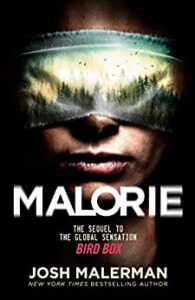Editor’s note: Straight up, Monster Librarian needs $45 to cover hosting fees. I mean that is the absolute base. To revamp our static site would be a much larger cost but this is what we need to keep moving forward. We are one of the oldest horror fiction review sites online. If you find any benefit at all to what we do, I really need the financial support. I can’t do it all alone. Please use the link to Bookshop.org to purchase the books we review through our affiliate storefront or contribute through PayPal using the red “contribute” button in the menu on the right to support our work. And now our review of Hexis by Charlene Elsby.
Hexis by Charlene Elsby (Bookshop.org)
CLASHbooks, February 2020
ISBN: 9781944866525
Available: Paperback, Kindle
Hexis, the slickly crafted debut novella from Charlene Elsby, is entertaining, while using almost none of the conventions of typical horror writing. Linear stories, easy to follow happenings…they don’t exist here. Instead, you get a down-the-rabbit-hole journey into the inner mind and musings of a seriously disturbed lady. This is what might have happened if Aristotle and Timothy Leary had decided to pool their intellectual resources to create their own version of serial killer Aileen Wuornos. Sound insane? So is the book.
Hexis is written in an extremely vague, open-ended fashion, so much so that even describing the book is difficult, a lot of it will depend on how the reader interprets it. It seems to be about a lady who is never even named, so for this review, she’ll be called ‘X.’ X had a crummy relationship with a man at some point in her younger years, so she killed him. From time to time as her life progresses, the man shows back up in her life, so she kills him, again…and again…and again. The End.
If only it were that simple. Due to the vague way this is written, even determining what actually happens will depend on personal perception. Is he somehow brought back to life each time, forcing her to kill him again? Is she simply killing people who look like him, and her deranged mind fills in the blanks to make it seem like the same person? Does the whole thing take place completely in her mind, and none of it really happened? No explanation is ever given, and that’s the enjoyable part about the book; the story allows the reader to decide what actually happened. The whole book is an introspective study of X: what she feels, her anti-social tendencies, how she perceives her reality, or lack of it. The story does not move in a linear fashion; it’s more akin to jumping in and out of the river of time at different points, for a brief moment. Some of those moments are loaded with graphic sex and violent, gory killings, and that’s about the only nod to conventional horror writing. This is written to appeal to a certain type of horror fan: the ones who like a lot of psychology and musings, and aren’t as interested in fast-paced plots that zip from Point A to Point B. It’s a very well written piece of work, it just works best for a certain type of reader. The book works best if you read a chapter or two at a time. Take a break, think about what you just read, what it means to you, and what you think happened. Then, read another chapter or two, and prepare to have your cerebrum twisted yet again. Trying to burn through this book cover to cover in a sitting or two won’t work, you really need to take the time to think about it and enjoy it. Otherwise, you’re missing the point. This is meant for you to ponder over, not have everything explained and handed to you. That’s why it’s so much fun, you can almost mold the story to your own liking. It’s an unusual way to write, and makes for an “out there” reading experience.
Also worth noting is the author’s ability to write long passages that at times, don’t really mean anything at all… but they sound really good. It’s not just rambling for the sake of wasting pages, it’s done to sound incredible, without really saying much at all. It’s as if the words are no longer words, they are musical notes that form a melody, and it’s a quite a melody. You may find some meaning, or it may mean nothing at all, but the melody sounds beautiful. It’s not something you find often in horror writing; I really can’t think of any other examples to compare it to. Well done, and truly original.
Bottom line: if you are looking for something that is truly unique and different from a standard horror novel, and you want a mind-breaker of titanic proportions, this is the way to go. If you prefer straight-ahead stories where all is explained, look elsewhere. It will be interesting to see where author Elsby goes next; she’s got an original and enjoyable style. Highly recommended, for the reader type mentioned.
Contains: graphic violence, profanity, graphic sex
Reviewed by Murray Samuelson







Follow Us!